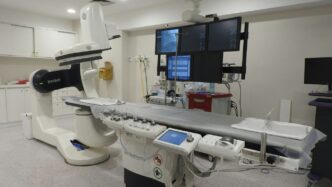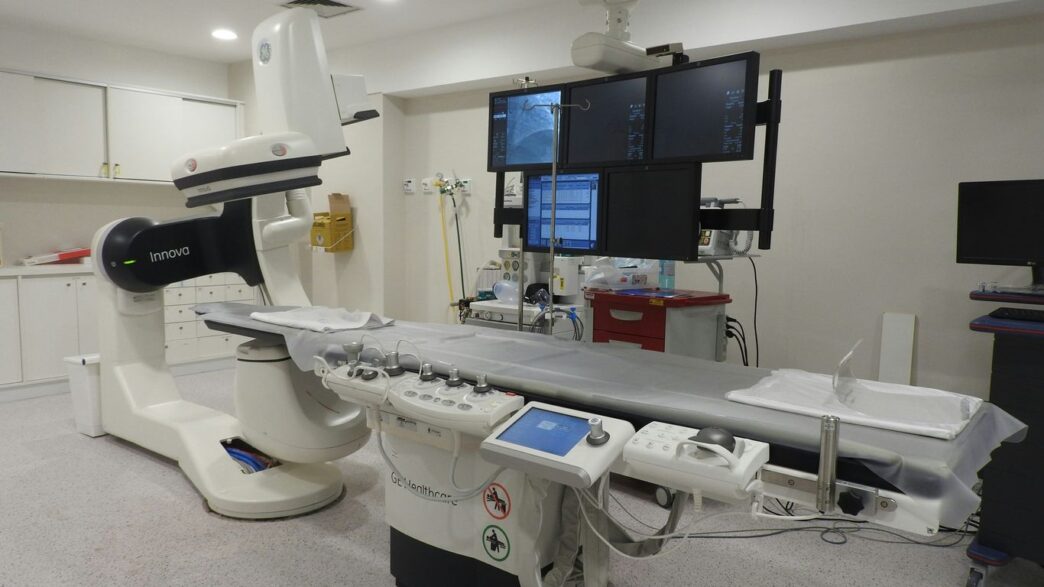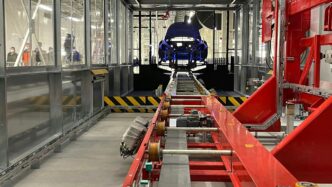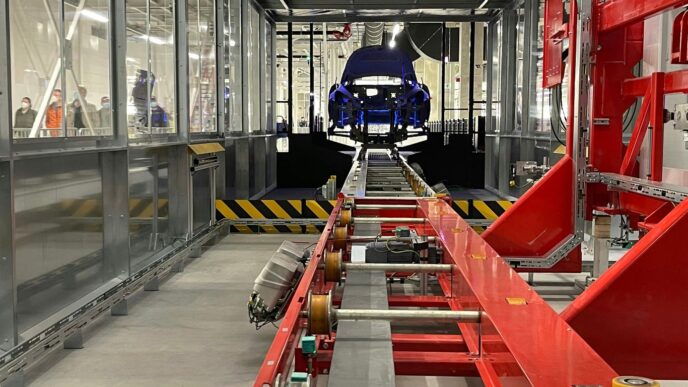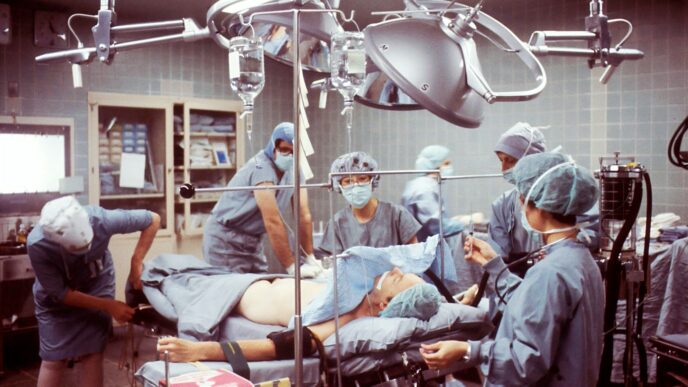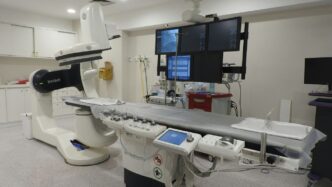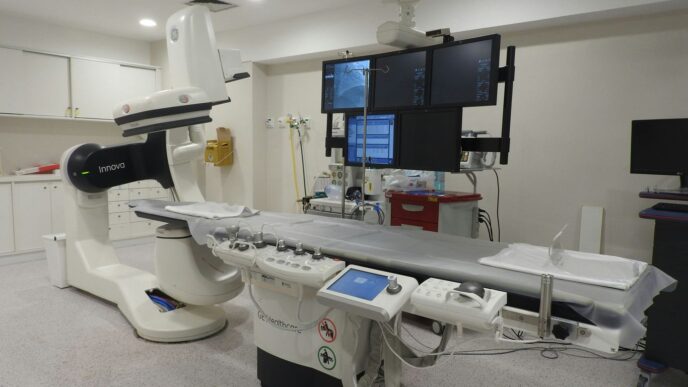Medtronic’s Hugo surgical robot is making waves in the operating room. This new system aims to bring the benefits of robotic-assisted surgery to more people. It’s designed to be flexible and easier to use, potentially changing how many surgeries are done. Let’s take a look at what makes the Hugo surgical robot stand out and what it could mean for the future of medicine.
Key Takeaways
- The Hugo surgical robot is Medtronic’s entry into the robotic surgery market, aiming to increase access to these procedures.
- Its modular design allows it to be used for a wide range of surgeries across different specialties like urology, gynecology, and general surgery.
- Early use cases show the Hugo surgical robot is feasible and safe, with potential benefits for patients and surgeons, though more long-term data is needed.
- Medtronic is working to expand the Hugo surgical robot’s availability globally, with regulatory approvals and initial procedures happening in Europe, Asia, and other regions.
- While facing some initial supply chain and manufacturing hurdles, Medtronic sees the Hugo surgical robot as a significant step in transforming minimally invasive surgery.
Introducing The Hugo Surgical Robot
A New Era in Robotic-Assisted Surgery
Robotic surgery isn’t exactly new, but Medtronic’s Hugo system feels like a fresh start. For years, the high cost and complexity of existing robotic platforms kept them out of reach for many hospitals and surgeons. This meant fewer patients could benefit from the precision and minimally invasive advantages that robots offer. The Hugo system aims to change that by making robotic surgery more accessible and adaptable. It’s designed to be a more flexible tool, fitting into a wider range of operating rooms and procedures.
Medtronic’s Vision for Surgical Robotics
Medtronic has been thinking about how to improve surgical robotics for a while. Their goal with Hugo is to break down the barriers that have limited robotic surgery’s reach. They want to offer a system that’s not only advanced but also practical for everyday use. This means considering things like cost, ease of setup, and how well it works for different types of operations. It’s about bringing the benefits of robotic assistance to more surgeons and, ultimately, more patients.
Addressing Barriers in Robotic Surgery
What are these barriers, exactly? Well, historically, robotic systems have been pretty expensive, requiring significant upfront investment. They can also be bulky, taking up a lot of space, and sometimes need specialized setups. Training surgeons and staff can also be a hurdle. Medtronic’s approach with Hugo is to tackle these issues head-on. They’ve focused on a modular design, which means the system can be configured in different ways depending on the surgery. This flexibility, combined with a focus on user experience and potentially lower costs, is how they plan to make robotic surgery a more common option. It’s not just about having a robot; it’s about making it work for more people.
Key Features Of The Hugo Surgical Robot
So, what makes the Hugo Surgical Robot stand out? Medtronic really packed a lot of thought into this system, aiming to make robotic surgery more accessible and adaptable. It’s not just one big, fixed machine; it’s designed to be flexible.
Modular Design for Versatile Procedures
One of the biggest things about Hugo is its modular setup. Instead of a single, large unit, it’s made up of separate arm carts. This means the surgical team can configure the system based on the specific surgery they’re doing. Need fewer arms for a simpler procedure? No problem. Need all four for something complex? It can do that too. This adaptability is a big deal because it means the system can be used for a wider range of operations across different surgical specialties, from urology to gynecology and general surgery.
- Configurable for different procedures: The number of robotic arms can be adjusted.
- Independent arm carts: Each arm moves on its own, offering more flexibility in positioning.
- Adaptable workspace: The setup can be tailored to fit the operating room and the surgeon’s needs.
Advanced Instrumentation and Visualization
When you’re operating, you need to see clearly and have instruments that move precisely. Hugo aims to provide just that. The system offers high-definition 3D visualization, giving surgeons a really clear view of the surgical site. The instruments themselves are designed with a lot of dexterity, almost like a human wrist, allowing for intricate movements in tight spaces. This enhanced precision can be a game-changer for delicate procedures.
- High-definition 3D vision: Provides a detailed and immersive view.
- Wristsed instruments: Offer a wide range of motion (up to 520 degrees of rotation) for complex tasks like suturing.
- Haptic feedback: Gives surgeons a sense of touch, helping them gauge tissue resistance.
Integrated Surgical Video Management
Keeping track of all the video feeds and data during surgery can get complicated. Hugo includes an integrated system for managing surgical video. This means all the visual information from the procedure is handled in one place. It also allows for easier sharing of the surgical view with the rest of the operating room team, including trainees who can observe the operation in 3D. This not only helps with real-time collaboration but also aids in training and documentation.
Clinical Applications Of The Hugo Surgical Robot
Urology Procedures and Outcomes
The Hugo Surgical Robot is finding a solid footing in urology, a field that has embraced robotic assistance for a while now. It’s being used for a range of procedures, from prostatectomies, both radical and simple, to more complex operations like radical cystectomies and partial nephrectomies. Even delicate procedures like pyeloplasty are being performed with the system. Early reports suggest it’s a safe and feasible option, comparable to other robotic systems already out there. While long-term outcomes, especially for cancer patients, are still being gathered, the initial signs are positive. Some studies even hint that using the Hugo system might help bring down the costs associated with robotic surgeries, which could open doors for even more applications down the line.
Gynecological Surgery Innovations
In gynecology, the Hugo system is also making its mark. It’s being utilized for procedures such as hysterectomies, myomectomies, and sacrocolpopexies. The goal here is to offer surgeons more precision and control, potentially leading to better results for patients. Think less pain, quicker recovery, and maybe even better cosmetic outcomes. It’s all about giving surgeons more tools to handle these sensitive procedures with confidence.
General Surgery and Beyond
Beyond urology and gynecology, the Hugo Surgical Robot is proving its versatility in general surgery. We’re seeing it used for common procedures like cholecystectomies (gallbladder removal) and appendectomies, as well as hernia repairs. It’s also being employed in colorectal surgeries, including colectomies and low anterior resections. The modular design of the Hugo system really shines here, allowing it to be adapted for a wide variety of surgical needs. This adaptability is key to its potential to become a go-to system across many different surgical specialties.
Here’s a quick look at some of the procedures where Hugo is being applied:
- Urology:
- Radical Prostatectomy
- Simple Prostatectomy
- Radical Cystectomy
- Partial Nephrectomy
- Pyeloplasty
- Gynecology:
- Hysterectomy
- Myomectomy
- Sacrocolpopexy
- General Surgery:
- Cholecystectomy
- Appendectomy
- Inguinal Hernia Repair
- Colectomy
- Low Anterior Resection
Global Adoption And Early Experiences
It’s pretty exciting to see how quickly the Hugo Surgical Robot is making its way around the world. Medtronic has been busy getting this system out there, and early reports are starting to come in from different countries.
First Procedures in Europe and Asia
Medtronic announced that the Hugo system has been used in clinical settings in Europe and Asia. These initial procedures are a big step, showing that the robot can be set up and used in real-world operating rooms outside of controlled trials. While specific details on every single surgery aren’t widely published yet, the fact that these procedures are happening means surgeons are getting hands-on experience.
Clinical Studies and Data Collection
Right now, a lot of the focus is on gathering solid data. Medtronic is running several clinical studies, like the "Embrace Gynecology" study in the U.S. This study is looking at how safe and effective the Hugo system is for gynecological procedures, like hysterectomies. They plan to enroll up to 70 patients across a few hospitals.
Here’s a look at some early studies and what they found:
| Specialty | Procedure Type | Patients | Study Type | Key Finding |
|---|---|---|---|---|
| Urology | Pyeloplasty, Nephrectomy etc. | 4 | Observational | Results were comparable to older robotic systems, showing potential for various uses. |
| General Surgery | Colectomy | 3 | Case Series | No system failures, though minor adjustments were needed. Didn’t impact total surgery time. |
| General Surgery | Nissen Fundoplication | 1 | Case Report | Showed it was safe and possible for hiatal hernias, offering data for new users. |
| General Surgery | Inguinal Hernia Repair | 1 | Case Report | Patient had an uncomplicated recovery and was discharged the next day. |
| Urology | Radical Prostatectomy (RARP) | 112 | Case Series | Showed good recovery rates for urinary continence at 1 and 3 months post-surgery. |
These early results suggest the Hugo system is performing well in a variety of surgical areas.
Regulatory Milestones and Market Expansion
Getting approval to use medical devices like the Hugo robot is a complex process. Medtronic has submitted its first application to the U.S. Food and Drug Administration (FDA) for a urology indication, and it’s currently under review. They also have plans to seek approval for hernia repair and gynecology procedures down the line.
In Europe, the Hugo system already has a CE mark, which means it meets EU standards for safety and performance. This allows it to be used commercially in countries within the European Union. Medtronic is working to get the system cleared or approved in other regions too. It’s a gradual process, country by country, but the goal is to make this technology available more widely. The system is already in use in over 30 countries across five continents, with nearly 300 publications about it so far.
Benefits And Potential Of The Hugo Surgical Robot
Enhanced Patient Outcomes
The Hugo Surgical Robot is designed with patient well-being at its core. For patients, this often means less pain after surgery, reduced blood loss during the procedure, and shorter stays in the hospital. Think about it – less invasive means quicker bounce-backs. Studies are showing that patients who undergo procedures with Hugo are seeing better results, both in terms of getting back to their daily lives and in the long run, especially with cancer surgeries where follow-up is key. It’s all about getting people healed and home faster.
Improved Surgeon Ergonomics and Control
Surgeons aren’t left out of the equation here. The Hugo system aims to make the surgeon’s job easier and more comfortable. The setup allows for a more natural posture, which can make a big difference during long, complex operations. Plus, the instruments offer a really good range of motion and precise control. This means surgeons can perform delicate maneuvers with more confidence, potentially leading to fewer errors and better surgical precision. It’s like giving a surgeon a super-powered, incredibly steady pair of hands.
Cost-Effectiveness and Accessibility
While robotic surgery has sometimes been seen as a luxury, the Hugo system is looking to change that. Its modular design means hospitals can potentially configure it to their specific needs, which could lead to more efficient use and, hopefully, lower costs over time. The idea is to make this advanced technology more accessible to a wider range of hospitals and patients. This could be a game-changer in bringing advanced robotic surgery to more communities. By potentially reducing the overall cost of robotic procedures, Hugo might open doors for more surgeons to adopt this technology and for more patients to benefit from it.
The Future Of Robotic Surgery With Hugo

Expanding Indications and Research
So, what’s next for the Hugo system? It’s still pretty new, right? Medtronic is definitely looking to push its boundaries. Think about it – right now, it’s making waves in urology and general surgery, but the plan is to get it approved for a whole lot more. They’re talking about expanding into areas like thoracic surgery, colorectal procedures, and even some complex gynecological operations. It’s all about making this technology available for as many different kinds of surgeries as possible.
This means a lot more research is on the horizon. We’ll be seeing more studies looking at how Hugo performs in these new areas, comparing it to older methods, and really digging into the long-term results for patients. They’re also keen on seeing how things like artificial intelligence and even better imaging can be integrated into the system down the line. It’s not just about doing the same surgeries with a robot; it’s about finding new ways to improve them.
Overcoming Challenges in Implementation
Of course, it’s not all smooth sailing. Getting a new piece of tech like this into hospitals isn’t always easy. One of the big hurdles is training. Surgeons and their teams need to get comfortable with the Hugo system, and that takes time and dedicated programs. Medtronic is working on that, but it’s a big undertaking.
Then there’s the cost factor. While Medtronic aims to make robotic surgery more accessible, the initial investment for hospitals can still be significant. Plus, figuring out how it fits into existing operating room workflows takes some planning. It’s not just plug-and-play. Hospitals need to think about:
- Staff Training: Developing comprehensive training programs for surgeons, nurses, and technicians.
- OR Integration: Adapting operating room layouts and protocols to accommodate the Hugo system.
- Maintenance and Support: Establishing reliable systems for upkeep and technical assistance.
- Cost-Benefit Analysis: Demonstrating the long-term value and potential cost savings to hospital administrators.
Transforming Minimally Invasive Surgery
Ultimately, the goal is to really change how minimally invasive surgery is done. The Hugo system, with its modular design and advanced features, is built to be more adaptable than older systems. This flexibility is key to making robotic surgery a standard option for a wider range of procedures and patients. It’s about bringing the benefits – like quicker recovery times and less pain – to more people, not just those undergoing specific types of operations. As more data comes in and the technology evolves, we’re likely to see Hugo becoming a more common sight in operating rooms, helping surgeons perform complex tasks with greater precision and control, and hopefully, leading to better outcomes for everyone involved.
The Road Ahead for Hugo
So, Medtronic’s Hugo system is out there, and it seems like it’s shaking things up in the world of robotic surgery. It’s not just another piece of tech; it’s designed to be more accessible and flexible, which is a big deal. While it’s still early days and more studies are needed to really see how it holds up long-term, the initial reports are pretty positive. Surgeons are finding it useful for a range of procedures, and the hope is that it will bring the benefits of robotic surgery to more hospitals and patients. It’s definitely an exciting time, and it’ll be interesting to watch how Hugo fits into the surgical landscape moving forward.

